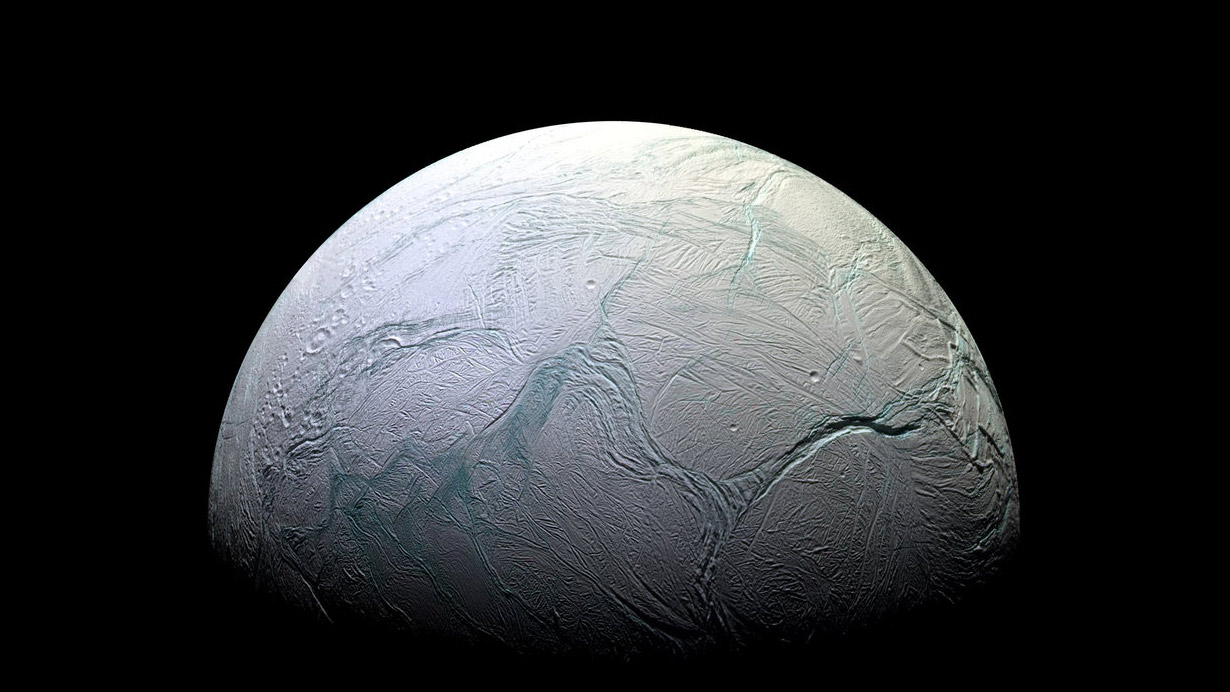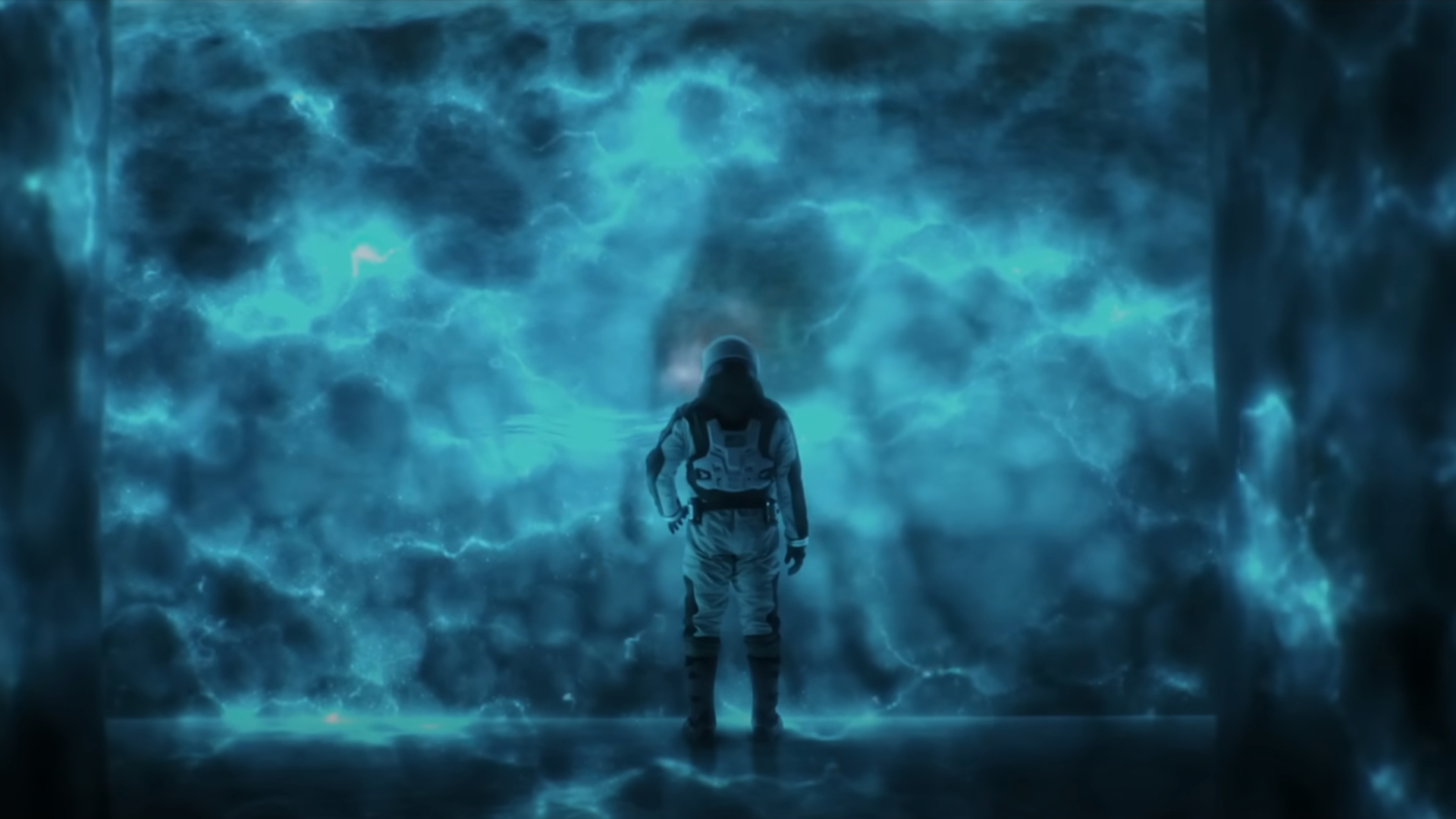Enceladus may have ocean currents like we see around Antarctica

The ocean of the water-spurting moon Enceladus might be more active than scientists realized.
New theories based on the shape of the ice shell suggest that 12 miles (20 kilometers) below the surface, the ocean inside Saturn's icy moon may have currents similar to those on Earth.
Scientists have been keeping an eye on Enceladus since 2014, when the Cassini spacecraft caught dozens of geysers spewing through fissures in the ice shell. This new theory, however, challenges previous thinking that suggested Enceladus' global ocean is mostly homogenous, besides some vertical mixing caused by the warmth of the moon's core.
Photos: Enceladus, Saturn's cold, bright moon
With more study, this new understanding may help scientists evaluate how hospitable the ocean of Enceladus — and those of similar icy moons — may be to microbes.
"Understanding which regions of the subsurface ocean might be the most hospitable to life as we know it could one day inform efforts to search for signs of life," study co-author Andrew Thompson, a California Institute of Technology professor of environmental science and engineering, said in a statement.
The new research suggests that salt levels in the ocean of Enceladus can vary by region, which may change circulation patterns. If proven, that would be similar to what oceanographers see in the regions of ocean on Earth that surround Antarctica, which Thompson studies regularly.
Breaking space news, the latest updates on rocket launches, skywatching events and more!
Other measurements from Cassini, particularly gravitational measurements and heat calculations, have shown the ice shell tends to be thinner at the poles of Enceladus than at the equator, suggesting the polar ice has been melted.
This melting and freezing activity would also affect the ocean currents, the researchers said. Salty water that freezes tends to release its salt, causing the surrounding water to become heavier and sink. Melting ice would have the opposite effect, diluting salt and reducing the density of the water.
"Knowing the distribution of ice allows us to place constraints on circulation patterns," lead researcher Ana Lobo, a graduate student of geophysics at Caltech, said in the same statement.
Lobo and Thompson found that based on our understanding of Antarctic oceans, Enceladus' regions of melting and freezing would be connected by ocean currents. These connections on Enceladus would forge a pole-to-equator circulation pattern that could move heat and nutrients around the small moon, which is roughly 300 miles (500 km) in diameter.
While Enceladus can be partly understood by studying Antarctica, the team pointed to significant differences from Earth's ocean to consider. Our planet's ocean is only 2.2 miles (3.6 km) deep on average, while that of Enceladus is roughly eight times deeper. Warming patterns are also different: On Earth, oceans tend to be warmer at the surface, closer to the sun's rays; by contrast, the waters on Enceladus are likely warmer at the bottom, from the core's heat.
With Cassini's work finished in 2017, researchers will have to use archival data and telescopic work to ferret out more information about Enceladus until another mission goes to Saturn. Jupiter, however, has its own icy moons that are expected to get visits in the 2020s and 2030s from NASA's Europa Clipper and the European Space Agency's Jupiter Icy moons Explorer (JUICE).
A paper based on the research was published March 25 in Nature Geoscience.
Follow Elizabeth Howell on Twitter @howellspace. Follow us on Twitter @Spacedotcom and on Facebook.
Join our Space Forums to keep talking space on the latest missions, night sky and more! And if you have a news tip, correction or comment, let us know at: community@space.com.

Elizabeth Howell (she/her), Ph.D., was a staff writer in the spaceflight channel between 2022 and 2024 specializing in Canadian space news. She was contributing writer for Space.com for 10 years from 2012 to 2024. Elizabeth's reporting includes multiple exclusives with the White House, leading world coverage about a lost-and-found space tomato on the International Space Station, witnessing five human spaceflight launches on two continents, flying parabolic, working inside a spacesuit, and participating in a simulated Mars mission. Her latest book, "Why Am I Taller?" (ECW Press, 2022) is co-written with astronaut Dave Williams.
